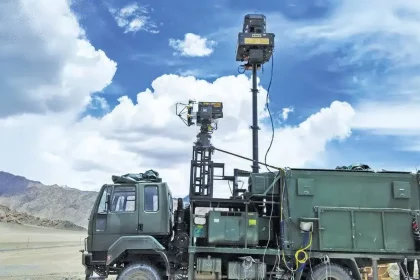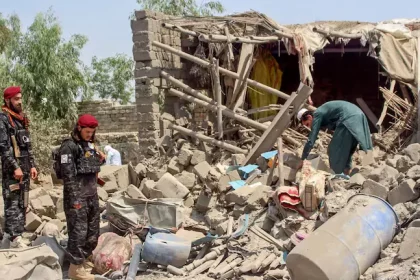DAC Approves ₹5,150 Crore ‘Dharashakti’ Electronic Warfare System to Boost Army’s Signal Superiority
Indigenous ‘Dharashakti’ system to strengthen India’s electronic warfare dominance and secure battlefield communication networks under ₹5,150 crore DAC approval.
Viral Photo of Army Veteran’s Car Blends Humor and Pride, Wins Hearts Online
Viral photo of a car with “My other car was a tank” sticker wins hearts online, blending humor, nostalgia, and…
PIB Debunks Viral Deepfake Claim on Loss of Four Rafales, Confirms No Missing of Lt Shivangi Singh
PIB confirms no Rafale loss, no missing pilot; viral deepfake video targeting IAF Chief is false.
Afghanistan Claims 58 Pakistani Soldiers Killed in Overnight Border Operations
Taliban claims heavy Pakistani casualties in overnight border strikes; both nations exchange accusations, regional powers call for restraint.
Jaish-e-Mohammed Forms Women’s Wing ‘Jamaat-ul-Mominaat’; Sadiya Azhar Appointed Chief, Intelligence Flags Rising Threat
JeM’s first women’s brigade, led by Masood Azhar’s sister, signals a new tactical threat; intelligence agencies on high alert.
HAL’s TEJAS MK‑1A Set for Maiden Flight on October 17; Defence Minister Rajnath Singh to Inaugurate Event
TEJAS MK‑1A to take to skies on October 17, marking a milestone in India’s indigenous aerospace and defence capabilities.






